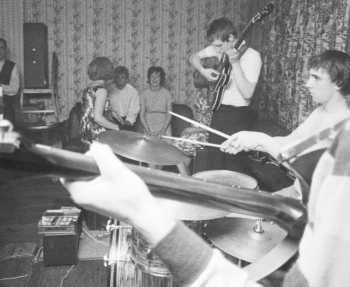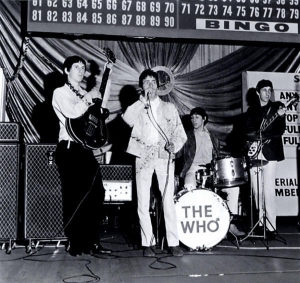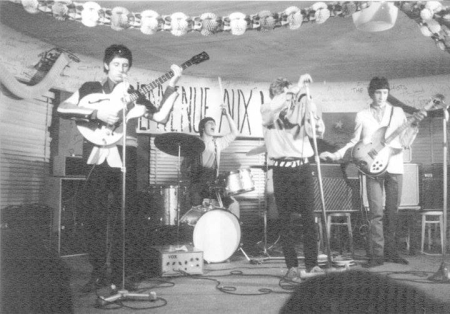The Who’s PA: 1963–1966
Pre–1963
The PA was a Decca mono HiFi valve amplifier. John:
“We used to call it the valve sandwich because the tops of the valves were so near the casing that if any of the audience leant on it, it would blow the valves up. We had to carry spare sets of valves everywhere. It came in very useful though because it got so hot that we could use it to dry out the tiny little Grampian microphones we used. They were great mikes but the more you slobbered into them as you sang the wetter and quieter they got. We’d always have a couple of spare mikes drying out on the valve sandwich at gigs.”
Also, at one point, the PA was a Vox AC15 amplifier, shared with John. The Detours had two Vox AC-15s, one for Roger and Pete to share, and one for John and the PA.
1963–1964
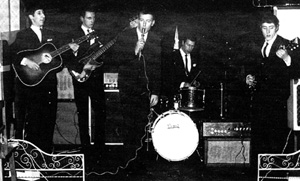
Ca. 1962 or 1963, as the Detours. Unknown PA.
The group used both Vox and Marshall PA with column speakers for the vocals.
Chris Langham:
I recall seeing the Detours in November 1963 at the Feathers in Ealing. The PA was Marshall with 2 × 1×12 or 2 × 1×15 speaker cabs set up on a chair sat on a pub table. Pete was playing a red SG through (I think) a Fender amp, and wearing green tartan trews! At the time the van was an old red Commor with op art signwriting on it.
John (in Eyewitness The Who, regarding the High Numbers opening for the Beatles at the Opera House in Blackpool, 16 August 1964:
We were at the bottom of the bill and they were top of the bill. They couldn’t understand why we were setting up this huge amount of equipment for ourselves. When our stuff was taken off, they brought out The Beatles’ stuff, and it was half the size, and they were using the theatre’s PA system, which was diabolical. The little microphones looked like electric shavers. We couldn’t understand why they put themselves through such rubbish.
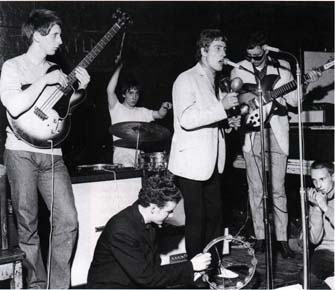
In 1964, as the High Numbers at the Scene Club, early Marshall JTM45 in front of drums.
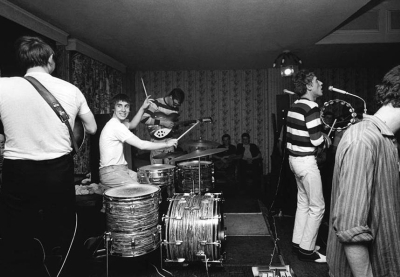
In August/September 1964, as the High Numbers at the Railway Hotel, unknown PA speaker visible at stage left.
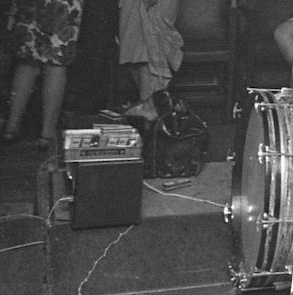
In August/September 1964, as the High Numbers at the Railway Hotel, what appears to be a Marshall JTM45 PA amp on the floor.
1965
During early-mid 1965 until November 1965, the Who switched from using Marshall equipment and became virtually exclusive Vox users, for both instrument amplification and PA, which consisted of a Vo× 100-watt PA amplifier and four 4×10 or 4×12 column speakers.
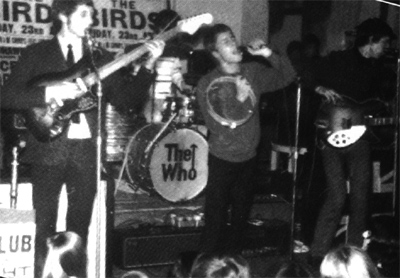
16 April 1965, at the Goldhawk, with two PA amplifiers, a Vox at left, and Marshall model 1963 JTM45 45-watt Super P.A. amplifier on right, on floor behind Roger.
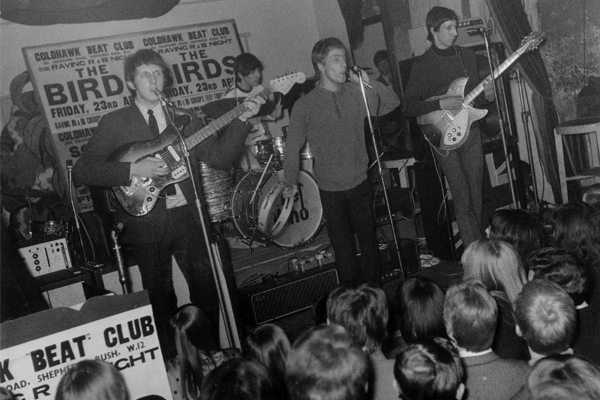
16 April 1965, at the Goldhawk, with two PA amplifiers, a Vox at left, and Marshall model 1963 JTM45 45-watt Super P.A. amplifier on right, on floor behind Roger.
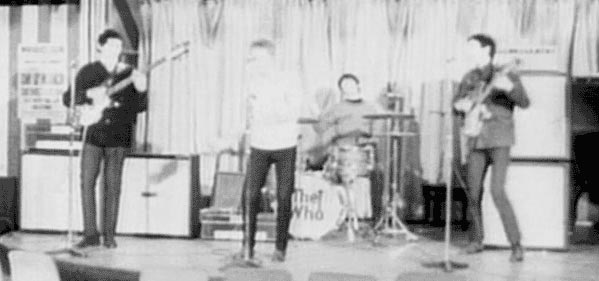
At the Marquee, 1965. Marshall model 1963 JTM45 45-watt Super P.A. amplifier on floor behind Roger.
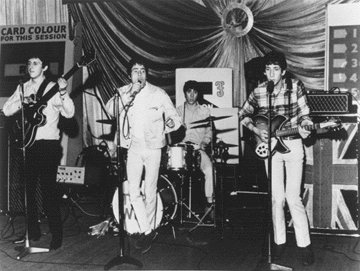
Ca. 1965, Vox PA amplifier on chair.
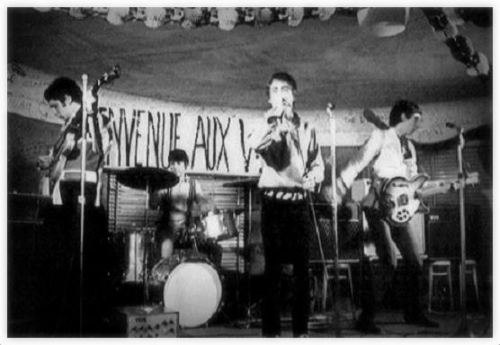
2 June 1965, Club au Golf Drouot, Paris, Vox PA amplifier on floor.
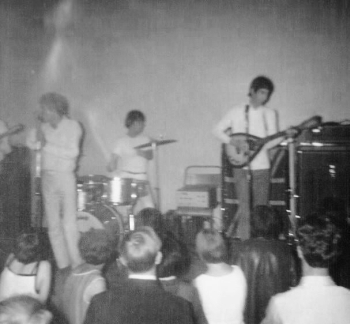
Click to view larger version. 27 Aug. 1965, at the Rang-A-Tang Club, Carnival Hall, Basingstoke, UK, with Vox PA on chair.
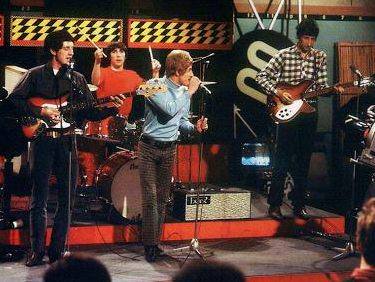
Ca. November 1965, likely borrowed Park (Marshall) PA, for television appearance on Ready Steady Go!.
Generic Vox PA
Photos of a rare generic 1965 Vox PA, courtesy Dominic. Click to view larger versions.
1965–1966
Early on, the PA typically consisted of two or four Marshall model 1969 4×12 speaker columns, powered by one or two four-channel, eight-input Marshall 1963 JTM45 45-watt Super P.A. or 1968 JTM100 100-watt Super P.A. amplifiers.
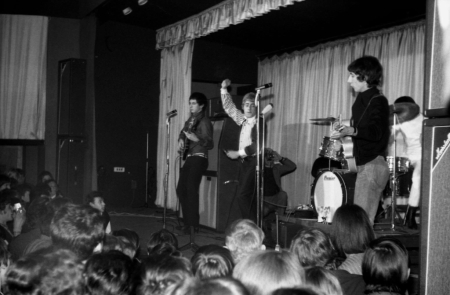
Click to view larger version 13 Nov. 1965, at La Locomotive Club, Paris, the first known photographed use of the new Marshall 8×12 cabinets for guitar and bass. Two Marshall 4×12 model 1969 PA columns stacked at each side of the stage, and a Marshall 1968 JTM100 100-watt Super P.A. amplifier in front of the drum riser.
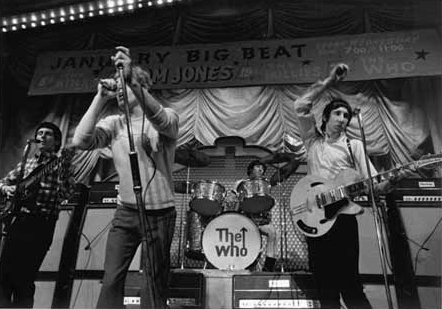
26 Jan. 1966, Locarno Ballroom, Stevenage, with two Marshall model 1968 100-watt Super P.A. amplifiers in front of drumkit.
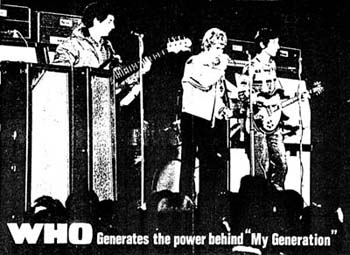
Two Marshall 4×12 model 1969 PA columns at left, courtesy Max the Mod (offline).
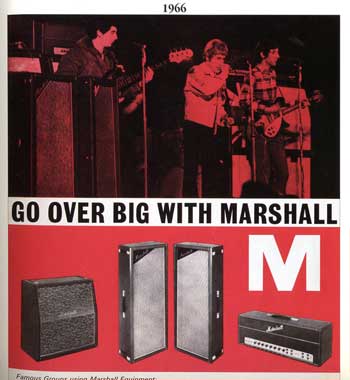
Click to view larger version. “Go over big with Marshall.” The Who in late 1965 or early 1966 with two Marshall 4×12 model 1969 PA columns at left (same photo as above), and, bottom, from left to right, Marshall 1960A 4×12 cabinet, Marshall 1969 speaker columns and Marshall 1968 Super P.A., courtesy Kurt Schrotenboer.
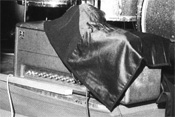
Click to view larger version. 23 Oct. 1966, closeup of model Marshall 1968 Super P.A., with small “The Who” shield badge at top left, identical to those badges used on Pete’s and John’s Marshall 8×12 cabinets and JTM45 100 heads.
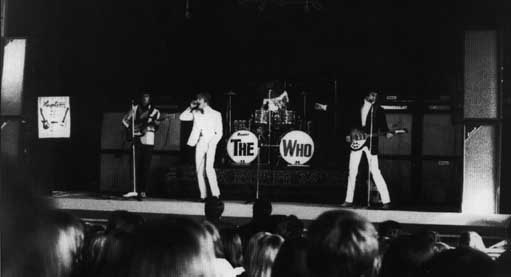
5 June 1966, Traffen, Sweden, with four 4×12 model 1969 Marshall PA columns, stacked in pairs.
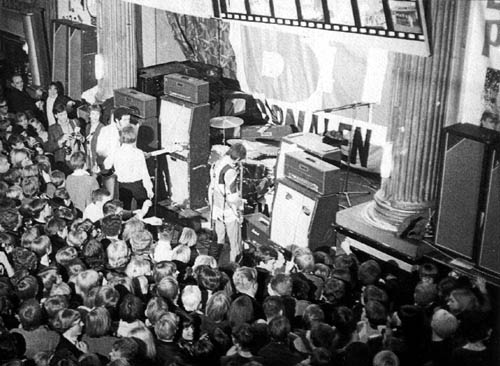
25 Oct. 1966, Nalen, four 4×12 model 1969 Marshall PA columns, stacked side by side.
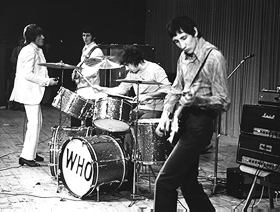
In 1966, Germany, a Marshall JTM45 100 Super P.A. sits behind the drumkit.
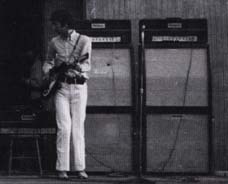
4 June 1966, Soderhamn, Sweden, a Marshall JTM45 100 Super PA for vocals sits to the left of Pete’s rig.
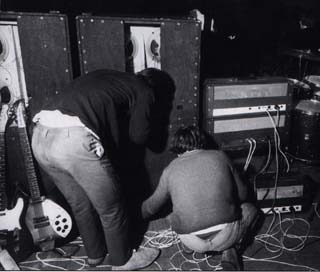
23 Oct. 1966, Malmo, Sweden, rear view of Pete’s Marshall 8×12 cabinets, with a Marshall JTM45 100 Super P.A. for vocals on the floor at right of photo.
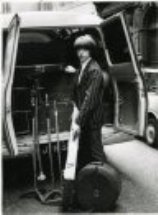
Ca. 1966, Who roadie Neville Chesters loads gear. Courtesy Max the Mod (offline).
Selected quotes
All quotes and references are copyright their original owners and are included for reference only.
Melody Maker, August 1965
Singer Roger possesses a £500 PA system which he pays for himself on HP. His particular stage trick, apart from singing, is accompanying the wilder guitar solos with the screeching of his mike against a cymbal. An occasional bang smashes the mike. Roger’s mike bill comes to £35 a week.
Beat Instrumental, April 1966
To compete with the instruments of the other group members Roger has a P.A. set-up which comprises of no less than 200 watts and 16×12 speakers. “And you still can’t hear me at times”, [Daltrey] complains. “In a large hall my voice travels clear of the rest and the P.A. sounds great, but in the smaller places it doesn’t get a chance. The result is that I go red in the face and lose my voice for a few days”.
New Musical Express 18 March 1966
Keith Moon: “We’ve got forty-eight 12-inch speakers, which is about 600 watts worth of power and with my drums it makes £3,000 worth of equipment on stage every night. That’s why we have three road managers to get the stuff erected. In some clubs we have to turn the speakers sideways to get them all on stage.”
Notable events
- 19 November 1965:
-
At the Empire Pool, Wembley, Roger “stormed” off the stage mid-set due to the inadequate sound system, only to return later after The Who’s own gear was installed.
- November 1965:
-
The Who receive their four custom/prototype 8×12 Marshall “stacks” and 100-watt amplifiers. The stack is born. And thus the “ante” is upped for PA equipment to compete with the instruments.
- 15 December 1966:
-
Bobby Pridden joins The Who’s crew as a roadie.
- 1966:
-
WEM introduces the “Slave P.A.” consisting of slaved 100-watt solid-state power amplifiers.
Resources and Information
Acknowledgements
- Bob Heil
- Dave Goessling
Special thanks to John Hughes (john@pureneasy.fsnet.co.uk) for assistance with this page.
Sources and related sites:
- Cream amplification: twtd.bluemountains.net.au/cream/amplification.htm (archived)
- Pink Floyd amplification: geocities.com/deadhead20.geo/PFlive.html (archived)
- The Grateful Dead’s “Wall of Sound”: dead.net/cavenweb/deadfile/newsletter19soundrap.html (archived)
- Max The Mod: westminsterinc.com/who1965/equip.htm (offline).
- Rock Hardware: The Instruments, Equipment and Technology of Rock. Edited by Tony Bacon. Harmony Books. 1981.
- The Who Concert File, by Joe McMichael and ‘Irish’ Jack Lyons. Omnibus Press.
- Guitar Player: The Who’s Sound System. How it grew from 200 to 75,000 watts. By Steve Caraway and Tom Wheeler. November 1977.
- repfoto.com.
- Sunn: Unofficial Sunn Museum and The Sunn Shack (archived)
- Watkins Guitar World: watkinsguitars.co.uk
- ML Executives: mlexecutives.org (archived)
Articles
- “Rock hall hails Heil’s wizardry. Metro-east native created equipment for stars.” From the Belleville (Illinois) News-Democrat (archived version), Tuesday, 9 May, 2006
- “Bob Heil: A Living Live-Sound Legend,” from Musician’s Friend (archived), May 2006
- Guitar Player: The Who’s Sound System. How it grew from 200 to 75,000 watts. By Steve Caraway and Tom Wheeler. November 1977.
Manufacturer’s sites
- Watkins Electric Music (WEM): wemwatkins.co.uk
- Bob Heil: heilsound.com
- Marshall Amplification: marshallamps.com
- Vox: voxshowroom.com
- Crown Audio: crownaudio.com
- Showco: showco.com
- Phase Linear History: phaselinearhistory.com
- Shure: shure.com
- Sunn: sunnamps.com
- Revox: revox.ch and reeltoreel.de
- Martin Audio: martin-audio.com
- Midas: midasconsoles.com
